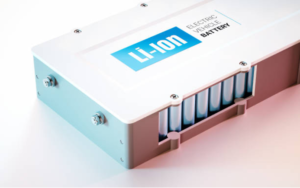APPLICATIONS OF TECHNOLOGY:
- Liquid based and solid-state lithium-ion batteries requiring higher energy density, faster charging rate, better cycling stability, longer calendar life, and improved safety
BENEFITS:
- Scalable and cost-effective methods that can be easily adopted into the current production lines of cathode materials
- Delivers significantly improved performance compared to a baseline polycrystalline NMC sample as well as related results reported in the literature
BACKGROUND:
- While lithium nickel manganese cobalt oxides (NMCs) are currently the most prevalent choices for the battery industry, most commercially-available materials remain polycrystalline aggregates composed of primary grains with random orientations. As the increased Ni content in the next-generation NMCs exacerbates performance degradation associated with cracking at the grain boundaries and side reactions on the particle surface, single-crystalline (SC) NMCs with controlled morphologies and surface orientations have gained tremendous interest as superior alternatives. SC-NMCs with well-controlled size and morphology, however, are notoriously difficult to synthesize and scale up, preventing them from successful commercialization and industry adoption.
TECHNOLOGY OVERVIEW:
Researchers at Berkeley Lab have developed scalable and cost-effective methods to synthesize single crystals of layered lithium nickel manganese cobalt oxide cathode materials for lithium-ion batteries.
The novel pathways to produce single crystalline NMCs are based on the traditional solid-state synthesis method, significantly lowering the manufacturing cost. Researchers demonstrated that regulation of crystal facets on the surface of Ni-rich SC-NMCs made by the present method can deliver significant improvement in rate capability and stability compared to the baseline polycrystalline counterpart. For instance, the Poly-SC811 electrode exhibited superior performance over the BL-PC811 electrode in terms of capacity retention. After 100 cycles, the capacity retention of the single-crystal samples was ~95% for Poly-SC811 and 90% for the Oct-SC811 electrode, as compared to 86% for BL-PC811.
Ultimately, results validate the significant advantage of the SC-NMC cathode. The novel methods address the dominating degradation mechanisms of particle cracking, as the Poly-SC811 electrodes remained mechanically intact without visible cracks under the same cycling conditions as other electrodes. The methods also produced NMC811 with particle surface enhanced for fast Li transport. This is highly beneficial for applications that require fast charging and/or exceptional cycling stabilities at high voltages.
DEVELOPMENT STAGE: Proven principle
FOR MORE INFORMATION:
https://pubs.rsc.org/–/content/getauthorversionpdf/C8TA10329A
https://www.osti.gov/pages/servlets/purl/1660390
PRINCIPAL INVESTIGATOR:
STATUS: Patent pending.
OPPORTUNITIES: Available for licensing or collaborative research.
SEE THESE OTHER BERKELEY LAB TECHNOLOGIES IN THIS FIELD:

